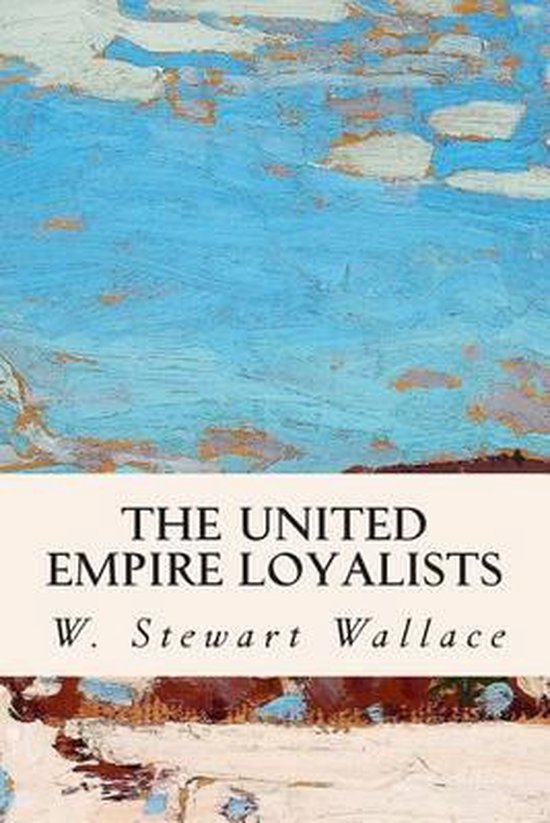The United Empire Loyalists
Afbeeldingen
Artikel vergelijken
Uitgever: Createspace Independent Publishing Platform
Auteur:
W Stewart Wallace
- Engels
- Paperback
- 9781508800491
- 09 maart 2015
- 76 pagina's
Samenvatting
The United Empire Loyalists-A Chronicle of the Great Migration, by W. Stewart Wallace, is a classic Canadian history text about the United Empire Loyalists who fled to Canada during the American Revolution. The United Empire Loyalists have suffered a strange fate at the hands of historians. It is not too much to say that for nearly a century their history was written by their enemies. English writers, for obvious reasons, took little pleasure in dwelling on the American Revolution, and most of the early accounts were therefore American in their origin. Any one who takes the trouble to read these early accounts will be struck by the amazing manner in which the Loyalists are treated. They are either ignored entirely or else they are painted in the blackest colours.United Empire Loyalists (or just Loyalists) is an honorific given in 1799[citation needed] by Lord Dorchester, the governor of Quebec and Governor-general of British North America, to American Loyalists who resettled in British North America during or after the American Revolution. The Loyalists were also referred to informally as the ''King's Loyal Americans''. At the time, the demonym Canadian or Canadien was used to refer to the indigenous First Nations groups and the French settlers inhabiting Province of Quebec.[1]They settled primarily in Nova Scotia, and the Province of Quebec (including the Eastern Townships, and Montreal). The influx of loyalist settlers resulted in the creation of several new colonies. In 1784, New Brunswick was partitioned from the Colony of Nova Scotia after significant loyalist resettlement around the Bay of Fundy.[2][3] The influx of loyalist refugees also resulted in the Province of Quebec's division into Lower Canada (present-day Quebec), and Upper Canada (present-day Ontario) in 1791. The Crown gave them land grants of 200 acres (81 ha) per person to encourage their resettlement, as it especially wanted to develop the frontier of Upper Canada. This resettlement added many English speakers to the Canadian population. It was the beginning of new waves of immigration that established a predominantly English-speaking population in the future Canada both west and east of the modern Quebec border.Following the end of the American Revolutionary War and the signing of the Treaty of Paris in 1783, both Loyalist soldiers and civilians were evacuated from New York City, most heading for Canada. Many Loyalists had already migrated to Canada, especially from New York and northern New England, where violence against them had increased during the war.The Crown-allotted land in Canada was sometimes allotted according to which Loyalist regiment a man had fought in. This Loyalist resettlement was critical to the development of present-day Ontario, and some 10,000 refugees went to Quebec (including the Eastern Townships and modern-day Ontario). But Nova Scotia (including modern-day New Brunswick) received three times that number: about 35,000-40,000 Loyalist refugees.[4] These included some 3,000 Black Loyalists, slaves who had gained freedom from the British for working with them during the war. At the same time, some white Loyalists in Nova Scotia had brought their slaves with them, and held them until slavery was abolished in 1834. Prince Edward Island received 2,000 refugees.An unknown but substantial number of individuals did not stay; they eventually returned to the United States. As some families split in their loyalties during the war years, many Loyalists in Canada continued to maintain close ties with relatives in the United States. They conducted commerce across the border with little regard to British trade laws.[5] In the 1790s the offer of land and low taxes one-quarter those in the Republic for allegiance by Lieutenant-Governor Simcoe resulted in the arrival of 30,000 Americans often referred to as Late Loyalists although land seemed to be the main reason for immigration so that by the outbreak of the War of 1812.
Productspecificaties
Wij vonden geen specificaties voor jouw zoekopdracht '{SEARCH}'.
Inhoud
- Taal
- en
- Bindwijze
- Paperback
- Oorspronkelijke releasedatum
- 09 maart 2015
- Aantal pagina's
- 76
- Illustraties
- Nee
Betrokkenen
- Hoofdauteur
- W Stewart Wallace
- Hoofduitgeverij
- Createspace Independent Publishing Platform
Overige kenmerken
- Extra groot lettertype
- Nee
- Product breedte
- 152 mm
- Product hoogte
- 4 mm
- Product lengte
- 229 mm
- Studieboek
- Nee
- Verpakking breedte
- 152 mm
- Verpakking hoogte
- 4 mm
- Verpakking lengte
- 229 mm
- Verpakkingsgewicht
- 113 g
EAN
- EAN
- 9781508800491
Je vindt dit artikel in
- Categorieën
- Taal
- Engels
- Boek, ebook of luisterboek?
- Boek
- Land
- Canada
- Studieboek of algemeen
- Algemene boeken
Kies gewenste uitvoering
Kies je bindwijze
(3)
Prijsinformatie en bestellen
Rapporteer dit artikel
Je wilt melding doen van illegale inhoud over dit artikel:
- Ik wil melding doen als klant
- Ik wil melding doen als autoriteit of trusted flagger
- Ik wil melding doen als partner
- Ik wil melding doen als merkhouder
Geen klant, autoriteit, trusted flagger, merkhouder of partner? Gebruik dan onderstaande link om melding te doen.

